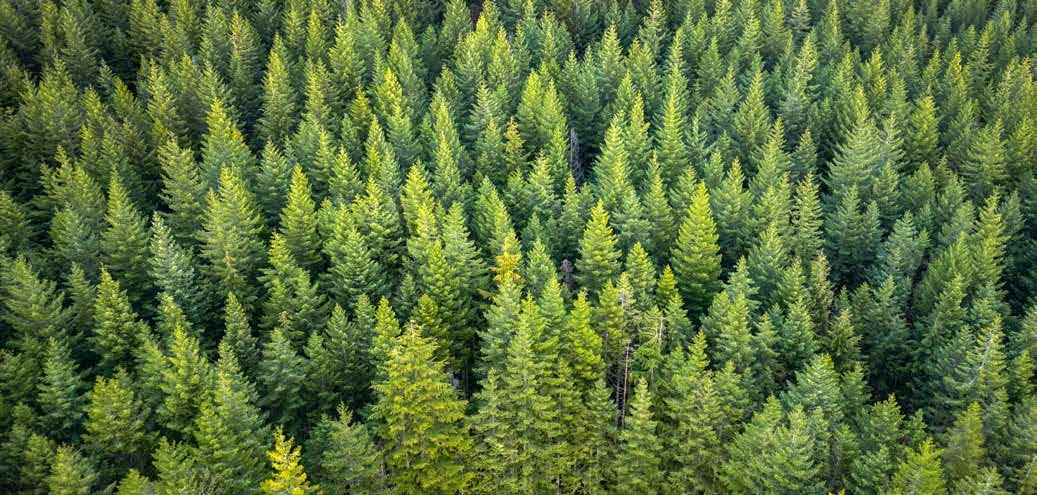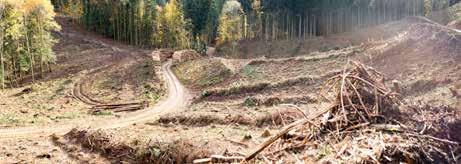Protecting Canada's Forests & Biodiversity



Forests Ontario measures
Biodiversity contributes to the resilience and integrity of ecosystems by supporting soil formation, climate regulation, and air quality regulation – ensuring that ecosystems can adapt to changes and stresses. Typically, biodiversity can be measured by the number of different animal and plant species. Measuring biodiversity on afforested sites, which have been barren for years, takes time. Since afforestation (which is just one of our many types of forest restoration approaches) is the first step in the long journey to diverse and mature forests, Forests Ontario uses other data as a proxy for biodiversity on newly planted sites.
We analyze the number of trees and tree species planted on thousands of planting sites each year and use geographic information system technology to look at sites that are planted near a watercourse, riparian area, or wetland, or that are near Areas of Natural and Scientific Interest (ANSI).
Planting near water can provide regulating and supporting ecosystem services, while planting near ANSIs can contribute to the health and longevity of those areas by extending forest cover and creating connectivity. We also study connectivity in woodlands, protected areas, and the Greenbelt. Having larger connected areas maintains natural ecological processes and allows wildlife the space to access resources, breed, and find habitat.

Finally, we use Global Biodiversity Information Facility data to identify observations of indicator species near our planting sites. Indicator species are animals (including the Ceru lean Warbler, pictured) or plants that are commonly associated with a particular tree species or ecosystems whose presence indicates strong ecological health and high forest quality.
Restoring our forested landscapes, finding ways to improve landscape connectivity, planting near areas of significant or ecological value, and identifying indicator species all help to strengthen biodiversity.

Canadians are invited to participate in National Forest Week — a one-week campaign led by the Canadian Institute of Forestry / Institut forestier du Canada (CIF-IFC) — from September 22-28, 2024.
The 2024 National Forest Week theme "Two-Eyed Seeing: Welcoming all knowledge to sustain our forests” is a powerful perspective braiding traditional knowledge with western science. Through mutual respect and collaboration, we can learn how to implement Indigenous traditions with modern technologies to sustain healthy forests for future generations.
Together we are stronger, helping to enable economic innovation and to mitigate and adapt to the ever-changing climate challenges (such as

wildfires, forest pests and pathogens, and species at risk) facing our forests.
“National Forest Week provides an exciting platform for us to share more about the forest sector and its significance to Canada’s culture, history, and future,” says CIF-IFC Executive Director Mark Pear son. “The CIF-IFC promotes and celebrates mutual respect and collaboration with Indigenous Peoples to help sustain our forests for future generations.”



According to the 2024 Logging Emissions Update from Nature Canada, Nature Québec, and the Natural Resources Defense Council, logging in Canada released 147 megatonnes (Mt) of carbon dioxide in 2022 — one fifth of Canada’s total reported emissions. This makes logging the third highest-emitting sector in Canada, after oil and gas (217 Mt) and transportation (156 Mt).
The report, which is based on federal government data, uses a peer-reviewed methodology. The report’s findings contradict longstanding government and industry claims that logging is sustainable and low-emission.
The federal government has for many years portrayed human activity, including logging, in Canada’s managed forest as having low — or negative — GHG emissions.
The government’s undercounting of logging emissions results from a bias in forest carbon accounting — not counting wildfire emissions but taking credit for a carbon sink resulting from natural forest regrowth after fires.
Canada’s failure to acknowledge and address the significant carbon footprint of logging threatens to undermine both its emission reduction plan and global market access for wood exports, particularly in places like the European Union, which increasingly demand truly sustainable forestry products.
The federal government must acknowledge the true carbon footprint of logging and implement measures to reduce its emissions, promoting a cleaner and more competitive forestry sector.


